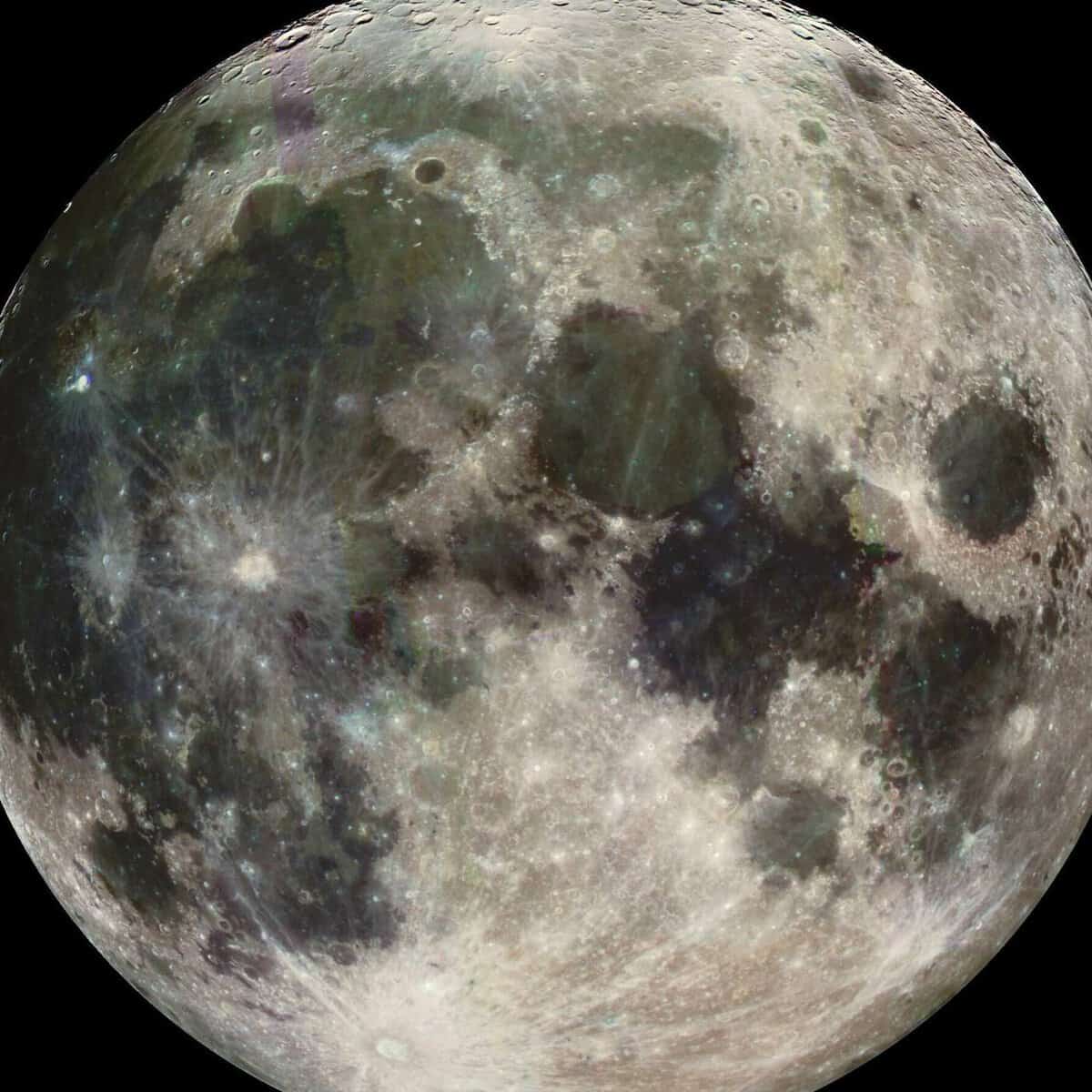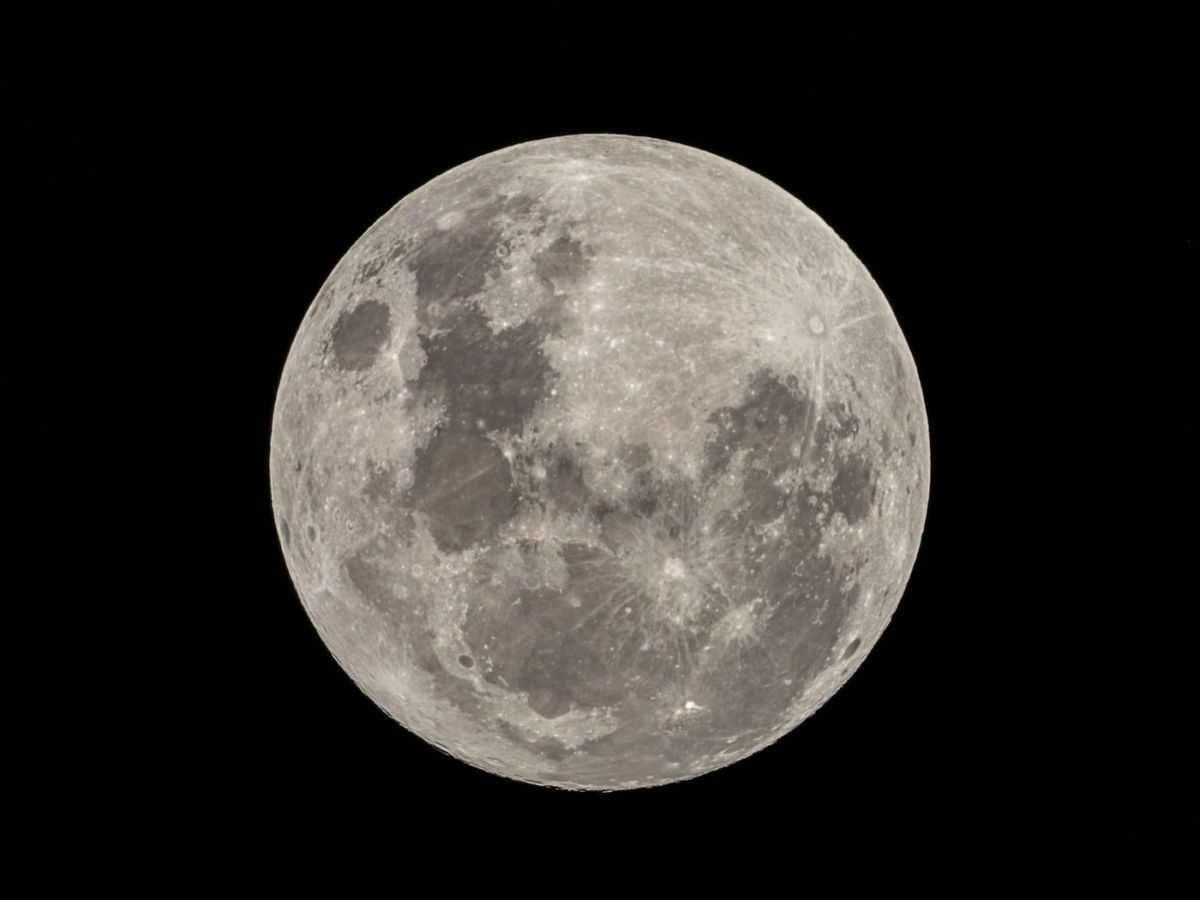
The solar system is home to a multitude of celestial bodies with varying sizes and shapes. Within this vast expanse, natural satellites hold a special place. Our very own Moon falls into this category as a satellite. Notably, the Moon stands out due to its impressive size. In fact, it is relatively large when compared to Earth, accounting for approximately one-fourth of our planet’s size. To put things into perspective, the Moon boasts a diameter of 3474 kilometers, surpassing that of the dwarf planet Pluto.
However, despite its larger size in comparison to Pluto, the Moon does not receive the designation of a planet. This is primarily because the Moon fails to meet the three criteria that define a planet.
As per the International Astronomical Union, in order to be considered as a planet, a celestial body has to fulfill three specific conditions:
- The celestial body must orbit around the Sun
- It should have a spherical shape
- A planet must be capable of clearing its surroundings of all other celestial bodies (except its own satellites)
Based on this definition, the Moon does not qualify as a planet. Since it revolves around the Earth and not the Sun, it falls into the category of natural satellites. However, upon closer examination of the Moon, we can observe that these classifications can sometimes be somewhat arbitrary.
What sets a satellite apart from a planet?
While satellites have a straightforward definition, planets must meet three specific criteria to be classified as such. If an object orbits around the Sun, it is classified as a planet. Conversely, if it orbits around a celestial body other than the Sun, typically a planet, it is referred to as a moon or satellite.
Scientists use these classifications to gain a better understanding of celestial bodies and the natural phenomena associated with them. However, these categories can sometimes appear arbitrary.
Why do celestial bodies like Mercury, Ceres, and Pluto, for instance, fall into the categories of planet, asteroid, and dwarf planet, respectively, even though they are so similar to each other? Meanwhile, objects as distinct as Earth and Jupiter are both classified as planets. To address the variations within the planet category, scientists have defined different types of planets, including dwarf planets, rocky planets, and gas giants.
Were you aware that our Moon shares many similarities with planets?
Similar to Earth, our Moon possesses a crust, a mantle, and a core. This signifies that during its formation, the Moon was essentially created as a planet. Scientists theorize that these internal layers exist beneath the surfaces of the majority of planets. It is likely that Mars, Venus, and Mercury also possess a crust, mantle, and core.
Additionally, volcanic activity has been documented on the Moon.
Dark spots on the lunar surface are evidence of ancient lava flows that once erupted. While volcanic activity ceased on the Moon around 3 billion years ago, the Apollo missions have detected numerous lunar tremors, which are more accurately described as moonquakes. Moonquakes indicate that the Moon is not a geologically inert body, despite its cold and icy exterior. Beyond its seemingly lifeless facade, the Moon remains geologically active, with ongoing processes comparable to those found on Earth occurring beneath its surface.
Why is the Moon not classified as a planet?
Despite sharing many characteristics with planets, the Moon does not orbit around the Sun like planets do.
Furthermore, the Moon does not possess the same size and gravitational force as a planet. As a result, the Moon is simply a satellite object that is neither a star nor a planet.
In order for the Moon to be considered a planet, it would need to have a direct orbit around the Sun.
Ultimately, the only factor that distinguishes multiple satellites from planets such as Earth and Mars is the celestial body that they orbit around.
Satellites orbit around planets, while planets orbit around a star.
However, in the event that we were to stumble upon a satellite with an atmosphere and inhabited by living organisms, would we still classify it as a mere satellite? Ought the classification of a celestial body as a planet to incorporate the existence of life on its surface? These are undoubtedly inquiries that scientists will inevitably confront in the future.

The moon has been a constant companion for hundreds of thousands of years, ever since humanity first consciously gazed up at the nocturnal sky. Interest in this radiant celestial body has been captivated by its mystical appearance. Furthermore, our natural satellite possesses numerous characteristics that, in ancient times, spawned numerous legends and myths. The presence of such a massive luminary in our night sky has long puzzled individuals. The origins of the Moon’s appearance and its perpetual facing towards our planet have only recently been elucidated. Nevertheless, the Moon’s impact on human existence has always been palpable. For billions of years, the Moon and Earth have maintained a close and intricate connection, mutually influencing one another.
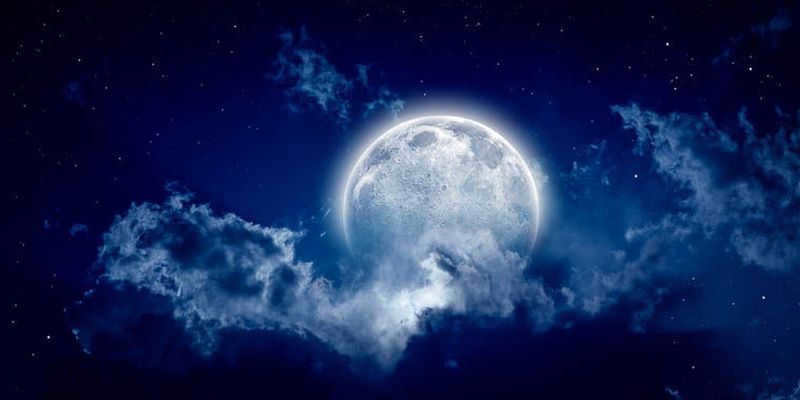
What is our natural satellite?
Anything related to the Moon is of great interest to humans. It’s not surprising, considering that it’s the only celestial body that is relatively close to us. The first recorded information about the Moon dates back to ancient times. In ancient Egypt, Mesopotamia, and China, the appearance of this beautiful object in the night sky led to the creation of lunar calendars. Even in those ancient times, astronomers had a basic understanding of the Moon’s periodicity and attempted to explain the various phases of the lunar disk. As early as the 2nd century BC, the Greek scientist Hipparchus was able to calculate the distance from the Earth to the Moon and made the first attempt to explain the presence of lunar phases.
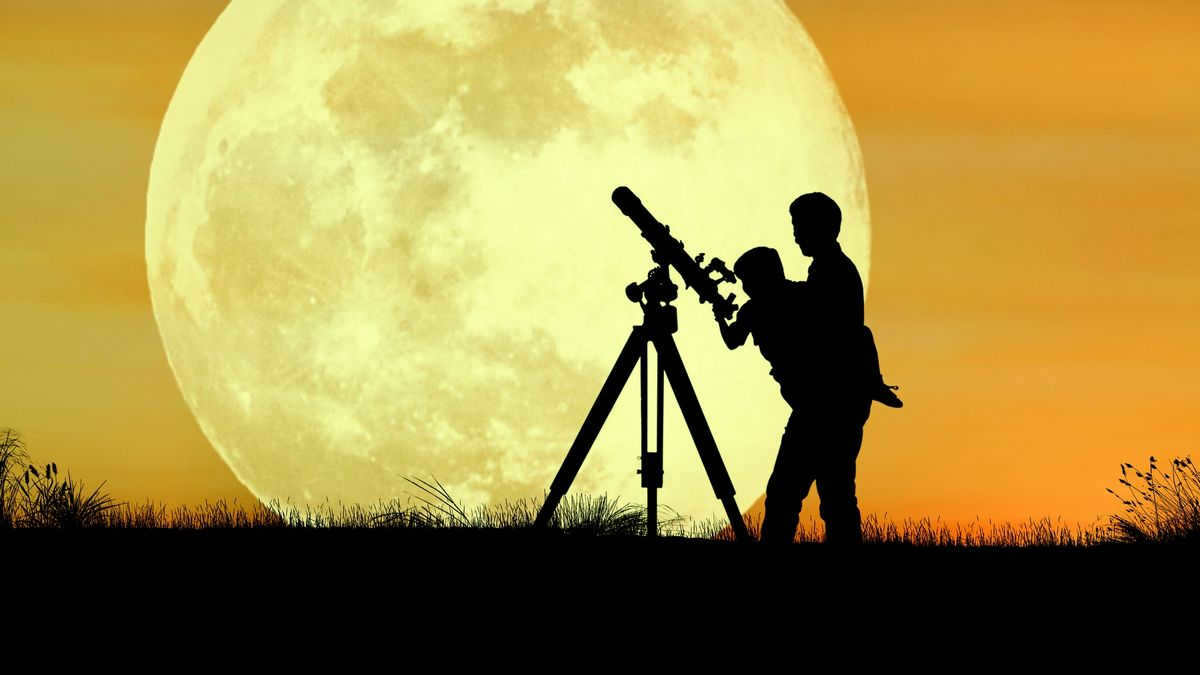
With the introduction of optical instruments, more fascinating discoveries about our celestial neighbor have come to light. During the latter half of the 17th century, Giovanni Riccioli, an astronomer, created a detailed map of the lunar surface. Despite the limited capabilities of the observation devices at the time, Riccioli managed to provide the first comprehensive description of the relief found on the moon’s surface. It was during this time that mankind gained knowledge of the existence of lunar mountains and craters. The expansive low-lying regions on the lunar landscape were aptly named lunar seas. It became apparent that the moon’s seemingly flawless appearance was not entirely accurate. In reality, the moon’s surface is dotted with numerous craters, which are a result of both volcanic and external forces.
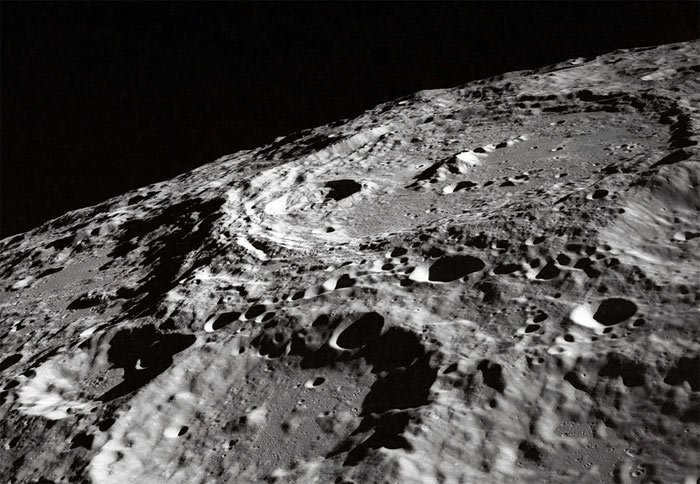
Precise information regarding our satellite emerged during the mid-19th century. Scientists not only managed to calculate the Moon’s distance, but they also acquired all necessary astrophysical data.
Our celestial neighbor is truly within reach. The distance from Earth to the Moon is 363,000 kilometers. These numbers pale in comparison to the vast distances that separate us from the closest planets in our solar system. In terms of size, the Moon ranks fifth in prominence. With a diameter of 3,475 kilometers, it is only surpassed in size by the colossal satellites Ganymede, Titan, Calypso, and Io, which orbit Jupiter and Saturn.
Ganymede, a moon of Jupiter, is larger than 5,000 km in diameter and is a celestial object comparable in size to Mars. The Moon holds a humble position in relation to Earth, being smaller and lighter than the planet (7.3477-1022 kg vs. Earth’s 5.972E24 kg). Although there are some dwarf planets that are smaller than our stunning neighbor, the Moon’s substantial size does not hinder our coexistence.
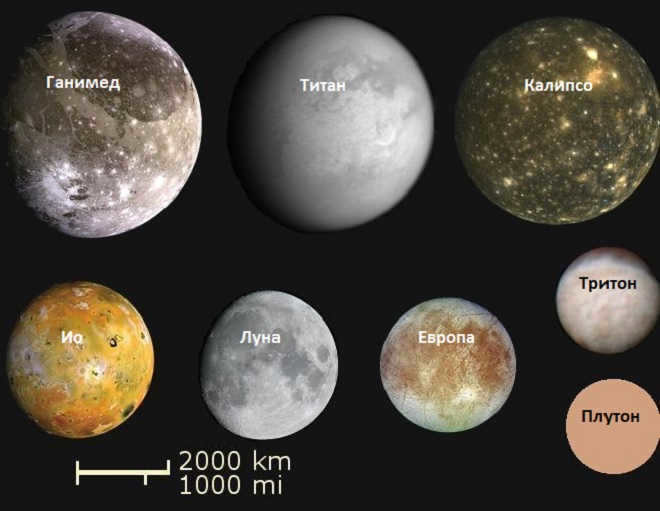
According to the prevailing belief, it is hypothesized that our planet may have experienced a collision with another celestial body during the early stages of the solar system. This collision resulted in the formation of various large fragments, one of which eventually developed into our natural satellite, the Moon. However, this hypothesis is met with opposition from proponents of the theory that the Moon originated alongside the Earth. According to this alternate theory, the Moon was formed simultaneously with our planet. Despite its distinct physical characteristics, our current lunar neighbor could have potentially existed as an independent celestial body billions of years ago. The Earth, being the nearest planet to the Moon, managed to capture this celestial entity due to the influence of its powerful magnetic field and gravitational force. A similar mechanism is believed to have operated for other smaller planets, which later became satellites of larger celestial bodies.
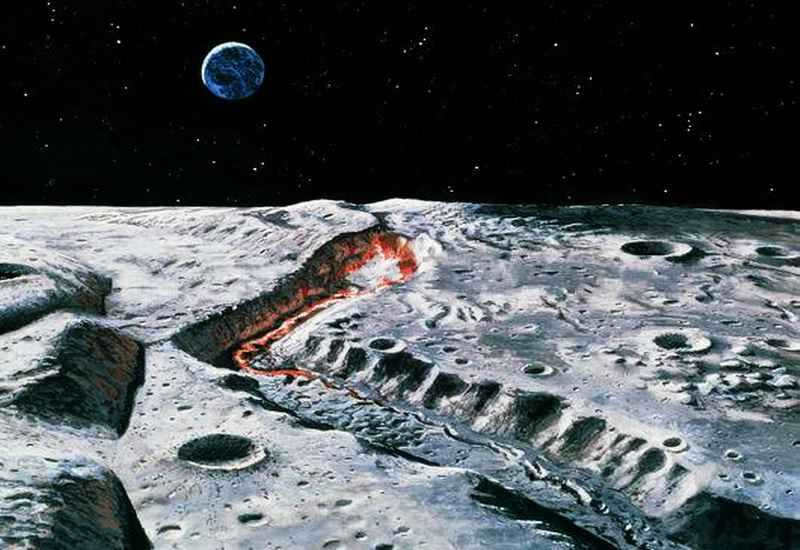
Ever since the Earth and Moon first came together, there has been little change in the appearance of our celestial neighbor. After observing the luminous lunar disk for countless years, scientists have reached the conclusion that our satellite is essentially a lifeless geological entity. The Moon’s tumultuous youth came to an end millions of years ago, evident in the plethora of volcanic craters and lunar plains formed by massive lava flows.
Nevertheless, from an astrophysical standpoint, our satellite remains an active celestial body, exerting its influence on our planet and the entire space surrounding Earth.
The Orbit of the Moon
The movement of the Moon around the Earth is anything but simple. This fact was recognized by ancient scientists and astronomers. Every time the Moon appears in the night sky, it takes on a different appearance, and its motion is accompanied by various phenomena on Earth. The position and duration of its orbit are heavily influenced by the Sun, which exerts a gravitational force on the Moon that is 2.2 times stronger than the Earth’s gravitational force. It is now known that the Moon follows an elliptical path around our planet, periodically coming closer or moving farther away. The orbital velocity of the Moon is 1.023 kilometers per second. At its closest point to Earth, known as perigee, the Moon is 351 thousand kilometers away. At its farthest point, known as apogee, the Moon is 404 thousand kilometers away from Earth.
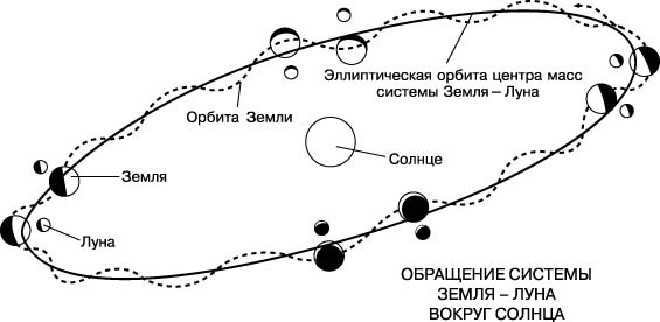
The Moon orbits around its parent planet and the Sun in almost the same time period, with a difference of two days. The satellite’s orbit takes 27 days, 7 hours, and 43 minutes, while its synodic period (the time it takes for the Moon to orbit around the Sun) is 29 days, 12 hours, and 44 minutes. This synchronization between the Moon’s revolution around our planet and its revolution around its own axis results in the Moon always facing the Earth on one side.
Scientists have discovered that our moon is steadily distancing itself from Earth at a rate of about 4 cm per year. As a result, the moon’s orbit takes on the shape of a gradually unwinding spiral.
The Moon’s Composition
In terms of its composition, our natural satellite resembles a standard celestial body, possessing all the necessary components for objects of this caliber in space:
The Moon has a density of 3.3464 g/cm³, which is considered high for its category of celestial bodies. This high density places it in second position among the satellites of our solar system, with Jupiter’s satellite Io taking the first place. Despite its high density, the lunar core is relatively small, with a diameter of only 700-800 kilometers. It is interesting to note that this small core is composed of molten iron, which transitions smoothly into the mantle. The lunar mantle can be described as a magmatic ocean, containing not only iron and magnesium, but also the main rock-forming minerals such as pyroxene and olivine. Additionally, silicon oxides can be found in the mantle.
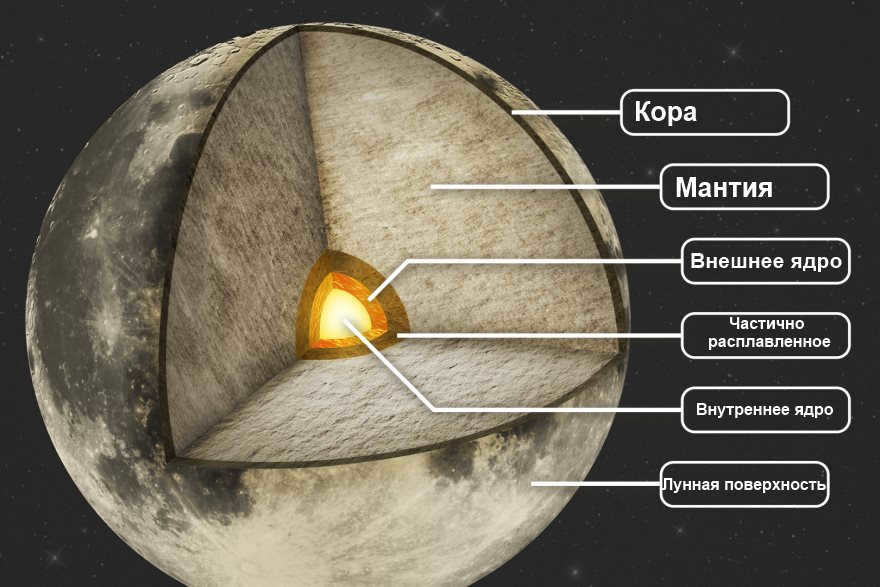
The lunar crust is a thin shell with varying thickness, ranging from 0-100 km. The underlying layers are composed of silicates, while the surface of the moon is covered in regolith, a natural rock formation resulting from the celestial body’s evolution. Due to the absence of an atmosphere, the moon’s surface is highly susceptible to cosmic influences. Regularly, tens to hundreds of thousands of large and small meteorites impact the moon’s surface, eroding the top layers of soil into smaller fragments. The thickness of regolith can vary significantly across different regions of the moon, ranging from a few centimeters to several tens of meters.
The Moon has a weak gravitational field due to its insufficiently large core, sluggish internal processes, and moderate orbital characteristics. Its gravitational force is only 1.62 meters per second. Additionally, the Moon’s magnetic field is also insignificant. Scientists have identified two types of magnetic fields on the Moon: constant and variable. The constant magnetic field is generated by the magnetized upper layers of the lunar crust, while the variable magnetic field is a result of the interaction between internal and external gravitational forces.
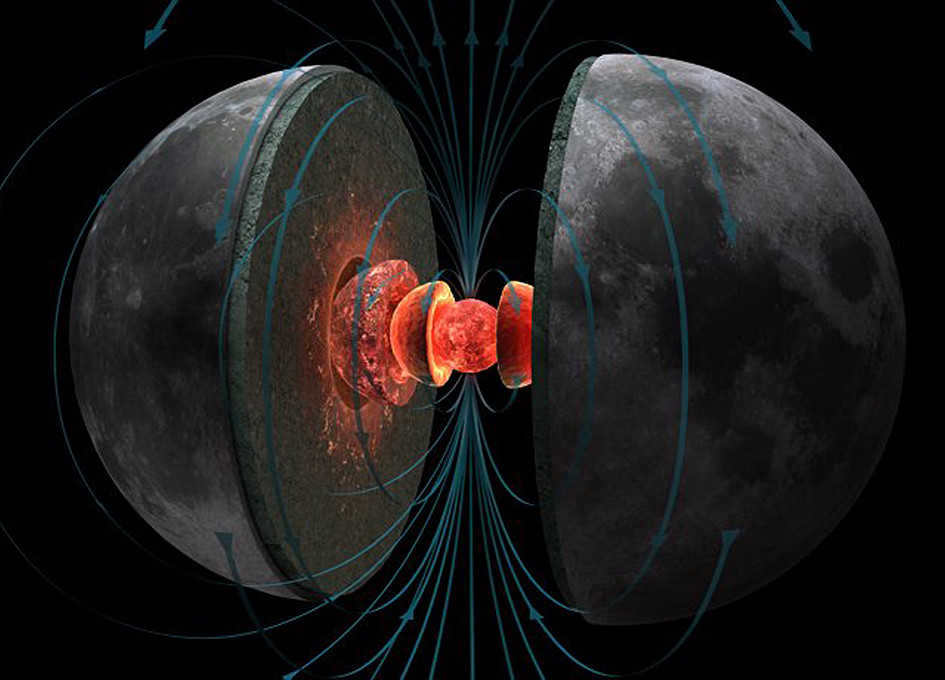
The condition of the lunar exterior
In contrast to large celestial objects, which require the presence of an atmosphere, the Moon lacks this crucial component. The reasons for the absence of a substantial gaseous surface layer on our satellite are still unknown. Some scientists speculate that this unique state of the Moon is a result of its unique formation process. The gaseous shell is extremely rarefied, with an average density of only 2-2.5 x 105 particles/cm³.
The gas content on the surface is so minimal that it causes drastic temperature changes. The Moon experiences extreme cold at night, with temperatures dropping as low as -1750 Celsius. Conversely, during the day, it becomes scorching hot, reaching up to +127 degrees Celsius. Nevertheless, at a depth of one meter, the lunar soil maintains a consistent temperature of 35 degrees regardless of the lunar day.
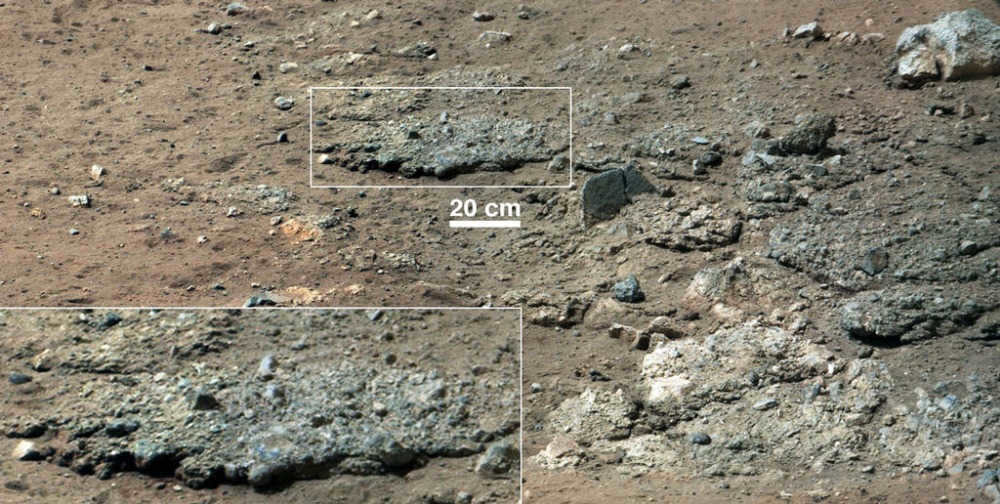
The lack of atmosphere on the moon results in a consistently black sky, whether it is day or night. It is interesting to note that we are accustomed to seeing a bright white lunar disk, when in reality, the surface of the moon is as black as tar. The moon has a low reflectivity, with only 10-18% of sunlight being reflected from its surface. The American astronauts who were the first to walk on the moon were taken aback by the natural color of the lunar soil, which appeared to be a mixture of brown and gray.
Investigation of the Moon
The moon is constantly being subject to astrophysical investigations. With the aid of advanced optical telescopes, humans have been able to extensively examine the condition of the lunar surface. The missions of the Soviet automatic lunar stations under the “Luna” program and the American space probes “Ranger” and “Servier” have provided initial insights into the true nature of our stunning celestial neighbor.
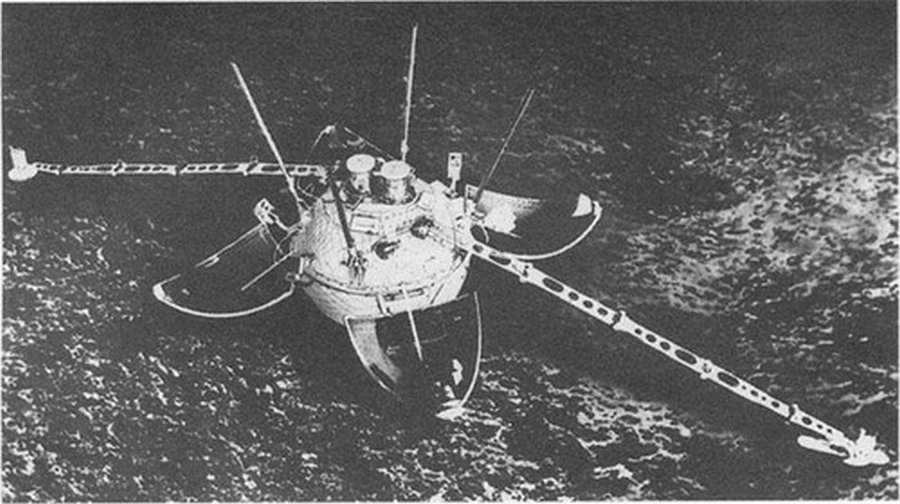
After the successful missions of unmanned spacecraft to the Moon, humans also embarked on lunar expeditions. In July 1969, the Eagle spacecraft safely landed on the surface of Earth’s natural satellite. This historic event marked the first time in human history that astronauts Neil Armstrong and Edwin Aldrin set foot on an extraterrestrial celestial body.
In total, the American Apollo program conducted 6 crewed missions to the Moon, with astronauts successfully landing on its surface. The most recent mission to explore our satellite was the Chinese lunar rover “Yuitu”, which touched down on December 14, 2013 as part of the Chinese program “Chang’e-3”.
Over the course of extensive scientific and technological exploration, humanity has not only achieved the feat of observing the far side of the Moon and collecting soil samples from its surface, but also meticulously studying the lunar terrain and gathering comprehensive data on astrophysical characteristics. This progress ultimately gave rise to the emergence of a distinct field of study known as Selenology, which delves into the intricacies of the Moon’s structure, surface, and soil.
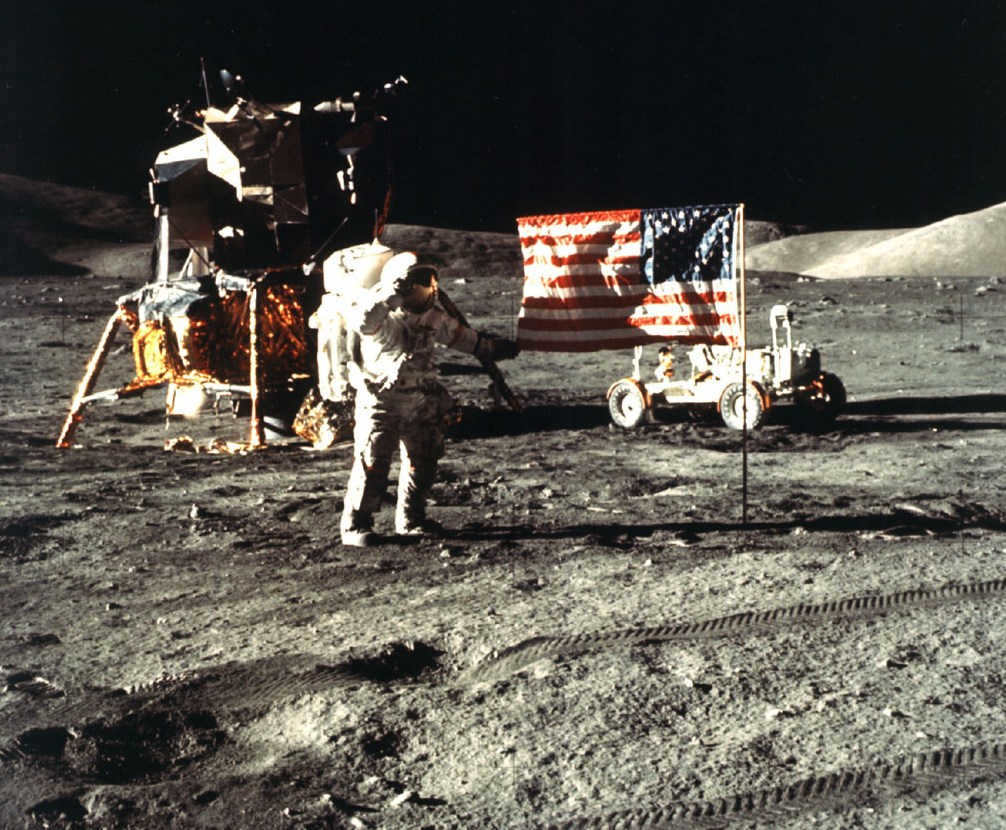

After conducting multiple landings and examinations of the lunar surface, astronauts on the Moon have concluded that it is a barren celestial body. Utilizing the Moon for space exploration and future colonization is currently not feasible. However, scientists believe that our closest neighbor could serve as a launching point for future space missions to far-off destinations. The economic viability of lunar exploration is not currently a priority.
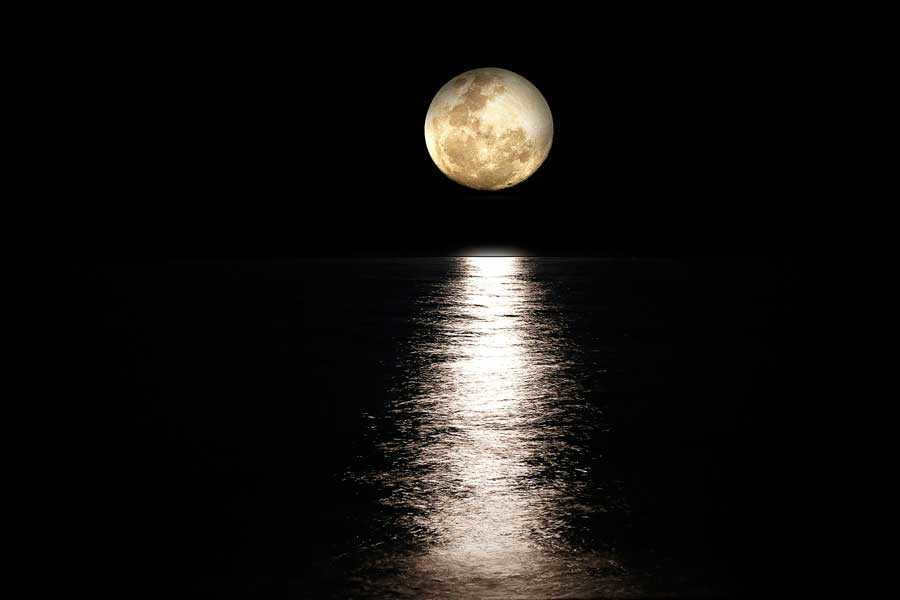
Within the vastness of our solar system, a multitude of entities reside, each possessing its own unique characteristics and features. Some are familiar to us, while others remain enigmatic, their secrets yet to be unravelled. Among the celestial bodies that populate our cosmic neighborhood, stars, planets, satellites, comets, asteroids, and meteorites are widely recognized. Yet, a perplexing query continues to baffle the minds of countless scientists dedicated to the study of our solar system: What precisely classifies the Moon – is it a planet or a star?
Is the Moon considered a planet?
In order to determine the classification of the Moon, we must first understand the criteria for what constitutes a “planet”. The International Astronomical Union has established a set of three conditions that an object must meet in order to be designated as a planet. Firstly, it must maintain a stable orbit around the Sun (or another star). Secondly, it must possess enough mass to assume a spherical shape. Lastly, it must have cleared its orbit of any other debris. Based on these criteria, the Moon does not meet the requirements to be classified as a planet since it lacks an orbit around the Sun.
Can the Moon be considered a star?
Stars, unlike the Moon, are much larger celestial bodies in the universe and are not composed of solid material. The Sun, for instance, serves as an example of a star as it acts as the central gravitational force around which the Earth and other planets orbit. The Sun, being 109 times wider than the Earth, consists of hot gases that emit substantial amounts of energy in the form of light and heat. In contrast, the Moon does not possess the characteristics typically associated with stars. It is a solid object, relatively small in size, and does not have any orbiting bodies revolving around it. Therefore, it cannot be classified as a star. This prompts the question: what exactly is the Moon?
The Moon: A Satellite with Unique Origins
According to scientific theory, the Moon came into existence billions of years ago when space debris resulted from a massive collision between Earth and another celestial body. This collision led to the formation of the Moon, which shares similar chemical composition and materials with our planet. While the Moon possesses some planet-like characteristics, such as its composition, it falls short in size and lacks the gravitational force required to be classified as a planet. Consequently, the Moon is best described as a satellite object, distinct from both stars and planets.
The composition of the Moon consists primarily of a core rich in iron, with a liquid iron outer core, which is then covered by a solid mantle and crust. On the surface of the Moon, you can find various minerals such as silicon dioxide, aluminum oxide, lime, magnesium oxide, titanium, and sodium oxide. Interestingly, all of these minerals are also found on Earth, which leads to the possibility of the collision theory.
Throughout history, people from different cultures have worshipped the luminaries of the day and night sky. These celestial objects have always captured the attention of scientists and researchers. Even today, there is an ongoing debate about whether the Moon can be classified as a planet, a star, or simply an Earth satellite. To fully comprehend this, one must delve into the history of the Moon’s formation and grasp the fundamental concepts of astronomy.

What is a satellite?
Since ancient times, people have been fascinated by the enigma of the night luminary. However, it was only in the early 17th century that it became possible to observe it in detail for the first time, thanks to the telescopes of I. Lippershey and G. Galileo. Today, the Moon is the most extensively studied celestial object. It is astonishing that there are still individuals who believe that it has existed for as long as the Earth. Meanwhile, astronomers propose various theories about its origin. According to their hypotheses, the Moon can be:
- A celestial relative of the Earth, both of which formed from a single embryo (protoplanet).
- The result of a collision between our planet and another cosmic body.
Satellites, known as celestial objects in astronomy, are pulled into orbit around larger cosmic bodies by gravitational force. They can also be formed from the same clouds of gases and dust as their host planets. Satellites follow stable or varying trajectories around their host bodies.
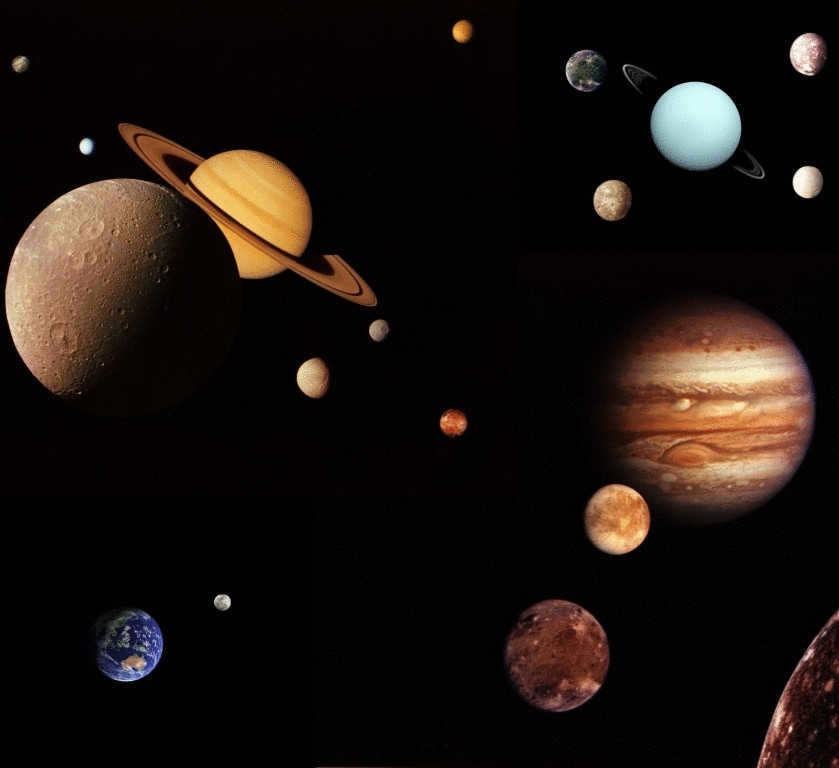
The scenario of the event is quite plausible. It is believed that over 4 billion years ago, the Earth was still in its molten state, as it was in its early stages of formation. At that time, a similar celestial body called Teia approached the Earth, resulting in a catastrophic collision. During this collision, the Earth absorbed a portion of Teia’s mass, while its nucleus and part of our protoplanet’s body remained in orbit around the Earth. From this material, the Moon formed, which astronomers classify as a natural satellite of the Earth.
Supporting this theory is supported by the fact that the satellite’s soil composition encompasses numerous minerals found in Earth’s soil. Due to the identical rotational speed of the moon around our planet and its own axis, it consistently presents the same side to us. This characteristic is observed in all satellites in close proximity to their respective planets. The collision of celestial bodies resulted in an acceleration of Earth’s speed and a shift in its rotational axis, subsequently leading to the alteration of seasons.
Is it possible for the Moon to be considered a star?
In the realm of astronomy, stars are categorized as massive gaseous celestial objects that possess a spherical shape and emit a glowing light. These luminous bodies are composed of a mixture of light chemical elements and continuously undergo thermonuclear reactions within their cores, resulting in the emission of intense streams of light and heat. The temperature of stars typically ranges from +2500 to +35000 degrees Celsius.
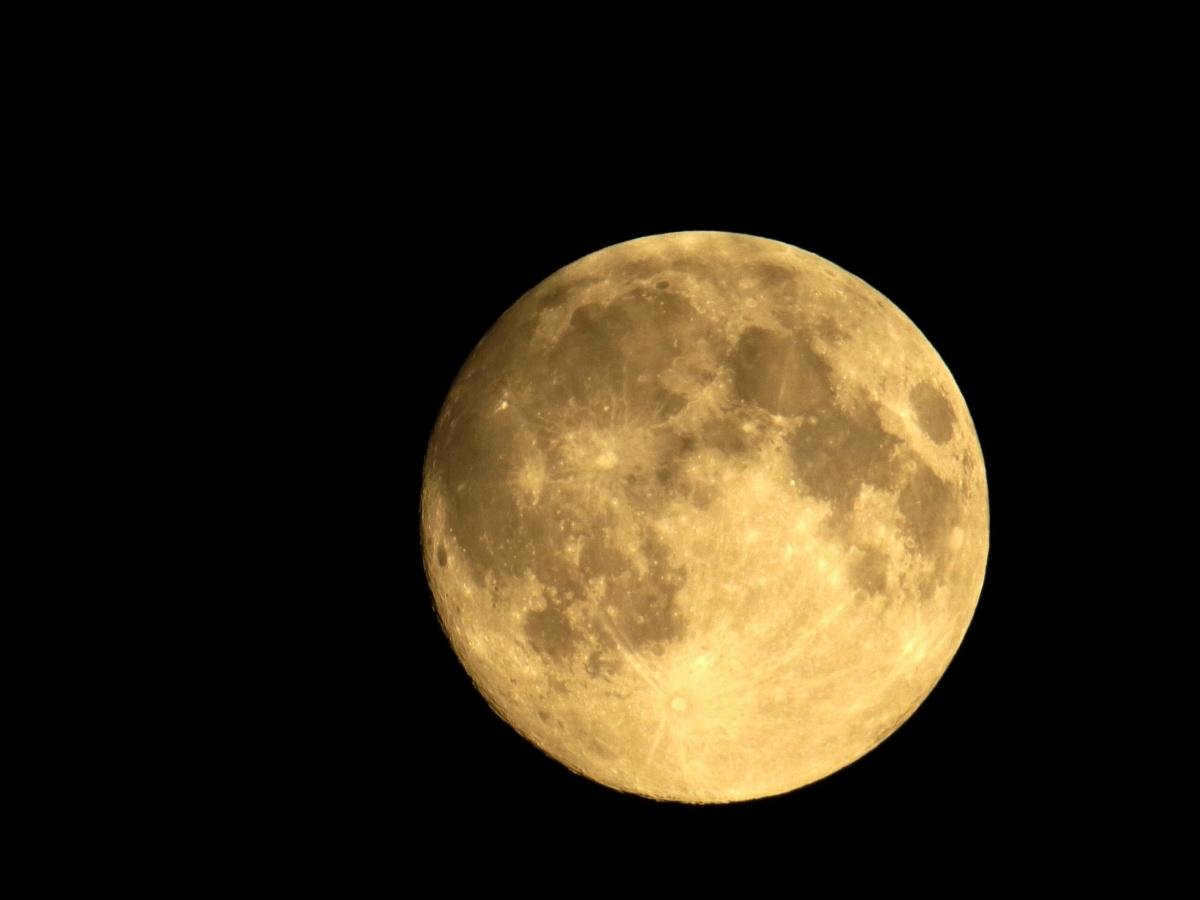
Stars maintain a state of dynamic equilibrium due to the presence of their own gravitational fields, which enable them to exert a gravitational pull on other celestial bodies. In contrast, the Moon partially fulfills these conditions.
While it is also spherical in shape, it is significantly smaller and composed of dense materials such as iron, titanium, and silicon, rather than being comprised of light. Although the Moon possesses enough gravitational force to influence the tides on Earth, it lacks the strength to attract large objects into its orbit. The gravitational field of the Moon is six times weaker than that of the Earth, resulting in a much lower weight for individuals. For example, a person weighing 60 kg on Earth would only weigh 10 kg on the Moon.
The night luminary does not undergo thermonuclear reactions in its depths, resulting in icy cold temperatures of up to -160°C at night. During the day, the Moon’s surface can only be warmed by the Sun to a maximum of +120°C. Hence, it cannot be classified as a star in any way.
Is the Moon a planet
A celestial body can be classified as a planet if it fulfills the following criteria:
- orbits a star continuously;
- possesses a gravitational force sufficient to maintain a spherical shape, but inadequate for thermonuclear fusion;
- possesses a core comprised of heavy chemical elements (excluding gas giant planets);
- clears its orbit of any associated space debris.
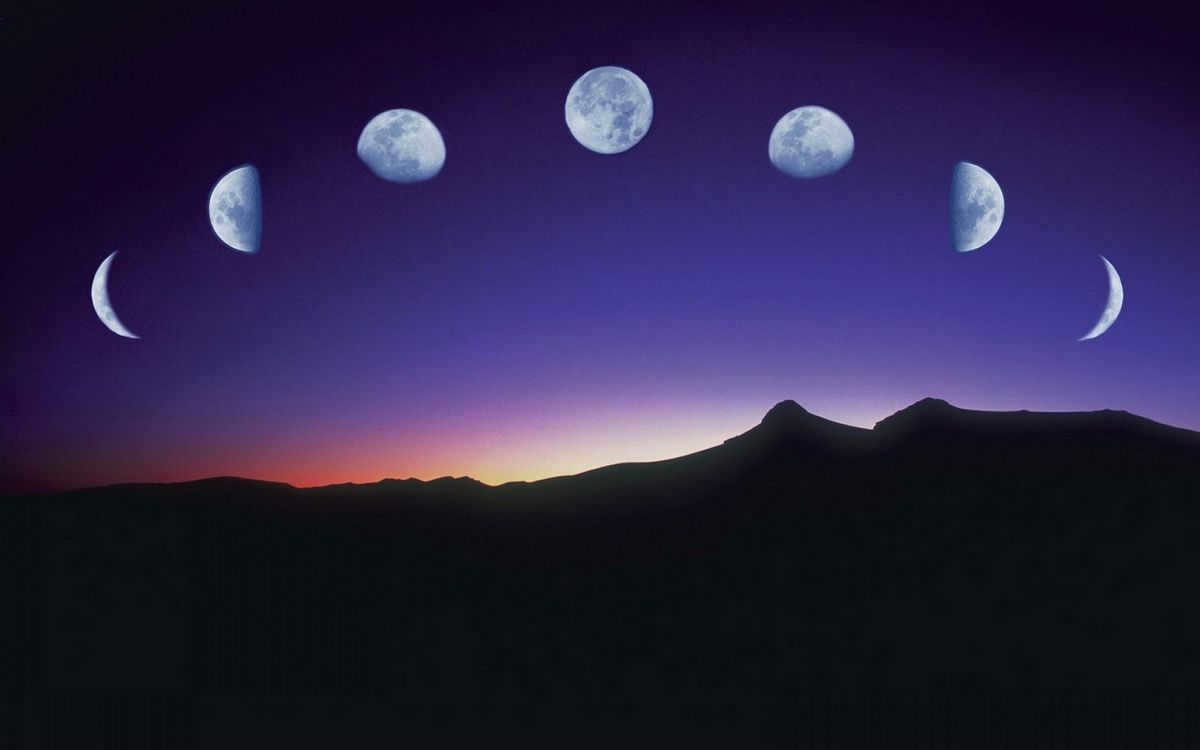
The Moon only partially meets these criteria. It possesses a spherical shape and contains a core rich in heavy elements, particularly iron. However, its core is relatively small, resulting in a weaker gravitational force compared to other planets. As a result, the Moon is unable to protect its orbit from asteroids and meteorites, which have caused the formation of various features such as craters and seas. Another factor that prevents the Moon from being classified as a planet is the fact that it does not orbit around the Sun.
Nevertheless, there exist astronomers who strongly dispute this conclusion. They bring attention to the fact that our nocturnal celestial body differs significantly from all other objects orbiting the solar system. In fact, its mass is much greater, nearly comparable to that of Mercury. Its structure bears resemblance to most planets, with a core, mantle, and crust.
The Moon is positioned at a sufficient distance, placing it beyond the reach of Earth’s gravitational forces. Its rotational trajectory does not align with the planet’s equatorial plane, unlike all other legitimate satellites. Based on these assertions, certain scientists argue that it should not be classified as a satellite, but rather as a bona fide planet.
The Moon’s impact on Earth and all its life forms is immense, extending far beyond the ebb and flow of the world’s oceans. Acting as a shield, it intercepts countless meteorites and asteroids, absorbing their impact. Additionally, the Moon’s gradual movement away from Earth has caused a deceleration in our planet’s rotation, resulting in a lengthening of the solar day from 5 to 24 hours. This celestial body’s influence even extends to the growth rate of plants and the overall well-being of both humans and animals.
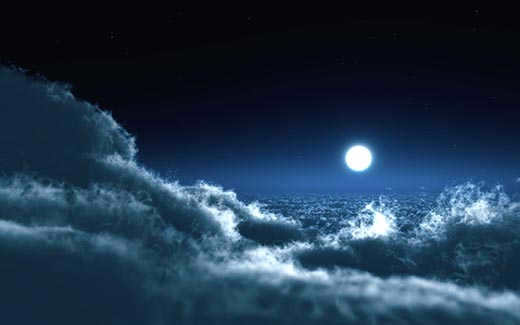
Following the Sun, the Moon is the most prominent celestial entity in the atmosphere, thus humans have always exhibited a strong fascination with it. At present, this nocturnal illuminator is subject to the most intensive examination.
Thanks to the investigations conducted by astronomers, we possess comprehensive knowledge about it, although there are still individuals who question the true nature of the Moon – whether it is a satellite, a star, or a planet. In order to provide a definitive response, it is imperative to first grasp the definitions of these celestial entities.
What is the definition of a star?
A star is a massive celestial object composed mainly of gas that emits light and maintains stability through its gravitational forces. Within its core, nuclear fusion reactions occur, generating temperatures in the millions of kelvins.
Typically, stars have a significant diameter and mass. They are primarily composed of lighter elements, with helium being the heaviest element present.
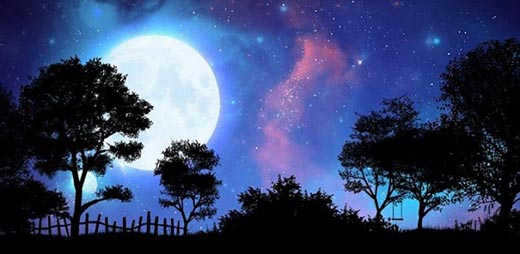
The Moon is not a star because it does not undergo thermonuclear reactions like stars do. Instead, it is dominated by heavy elements such as silicon, titanium, magnesium, sodium, and iron. The temperature on the Moon ranges from -160 °C to +120 °C, but it does not have the necessary conditions for sustaining nuclear fusion. Additionally, the Moon has its own gravitational field, which is responsible for causing tides in the Earth’s oceans. However, it does not have enough gravitational force to attract large objects to itself. Therefore, we can conclude that the Moon is not a star.
What Defines a Planet?
In the field of astronomy, a planet is a celestial object that revolves around a star. It possesses sufficient gravitational forces to obtain a spherical shape, but lacks the necessary mass for fusion reactions. The majority of these cosmic entities are primarily composed of dense elements, although astronomers have identified a class of planets known as gas giants, which are dominated by helium, hydrogen, and methane.
Every planet initially begins its formation in a liquid state. Over time, the heavier elements settle and form the core, while the lighter elements remain on the surface.
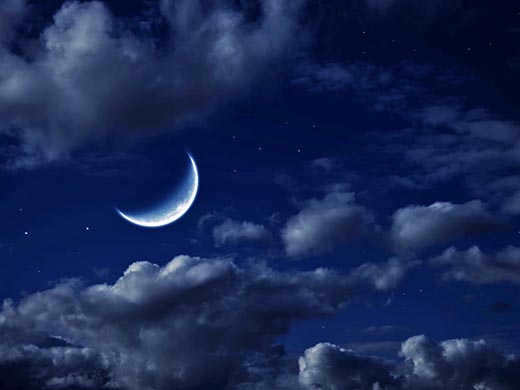
The moon possesses all the characteristics of a planet, including its composition of heavy materials, spherical shape, and iron-rich core. However, there are certain distinctions that set it apart from a typical planet. Firstly, the moon’s inner core is relatively small and exhibits a weaker gravitational force. While most planets have a core radius that accounts for approximately 50% of their total size, the moon’s core radius only amounts to around 20%. Secondly, a defining characteristic of a planet is its ability to clear its orbit of other celestial objects. The moon lacks this ability, resulting in periodic collisions with significant celestial bodies and space debris. Therefore, the moon cannot be classified as a planet.
Satellites are objects that orbit around other celestial bodies along a specific path. Their motion is influenced by gravity, and their orbit can be either constant or variable.
Celestial bodies are classified as satellites when they are captured by a planet’s gravitational field while traveling through space or when they form from the same gas and dust cloud as the planet.
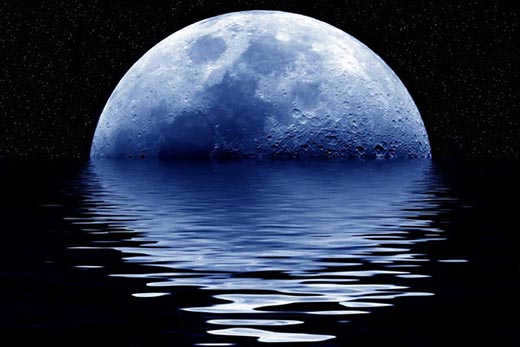
Regarding the Moon, it does indeed orbit the Earth in a specific trajectory, but its origin story sets it apart. The prevailing belief is that approximately 4.36 billion years ago, the Earth, in its protoplanet stage, collided with another protoplanet known as Teia.
This collision occurred tangentially, resulting in a significant amount of debris being expelled into Earth’s orbit, ultimately leading to the formation of the Moon. Despite this unique history, the field of astronomy categorizes it as a satellite of the Earth.
In recent times, a group of scientists has been endeavoring to demonstrate that the Moon should be classified as a planet rather than a satellite. Their arguments hinge on the Moon’s distinctive position among the other satellites within our solar system.

